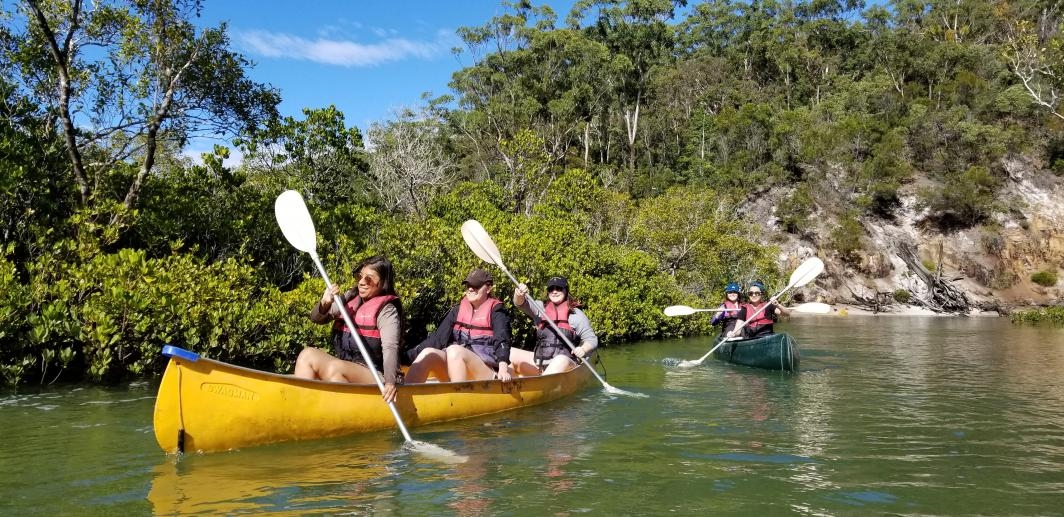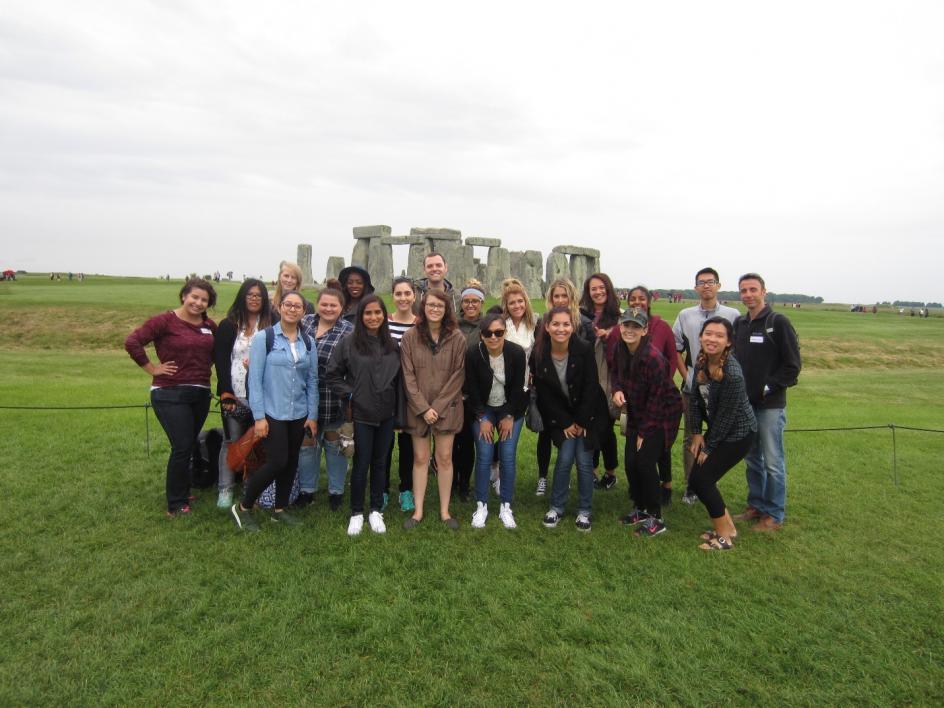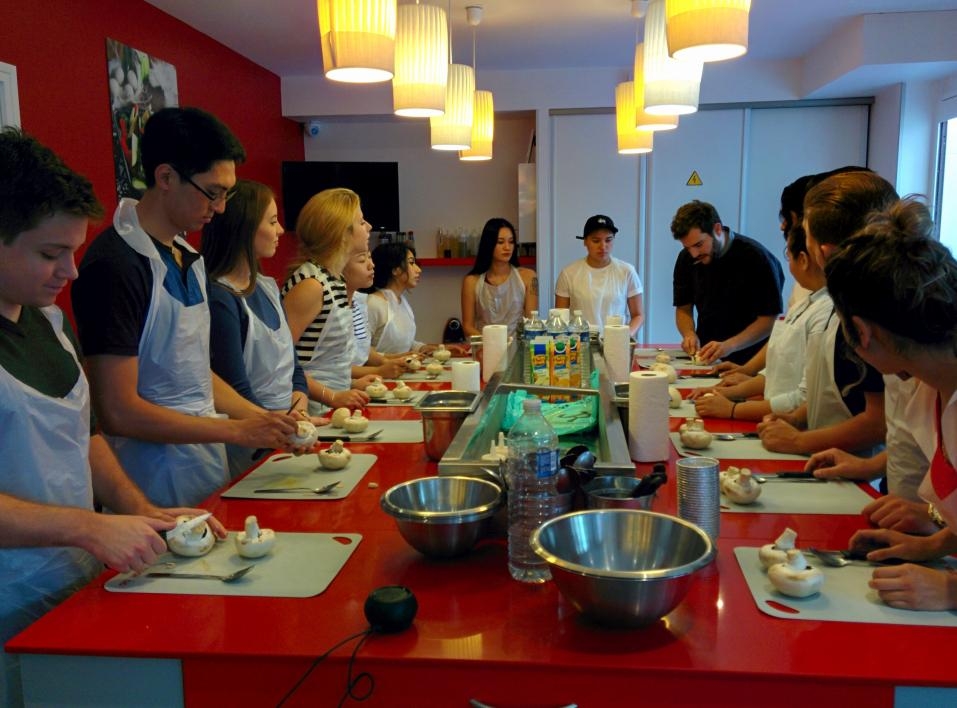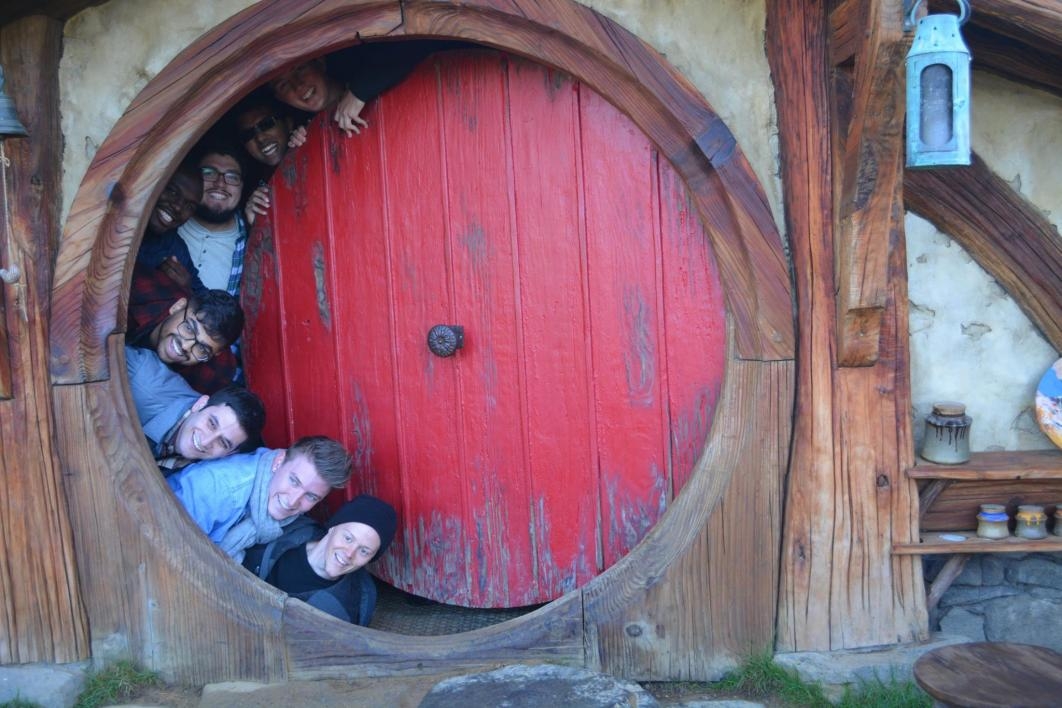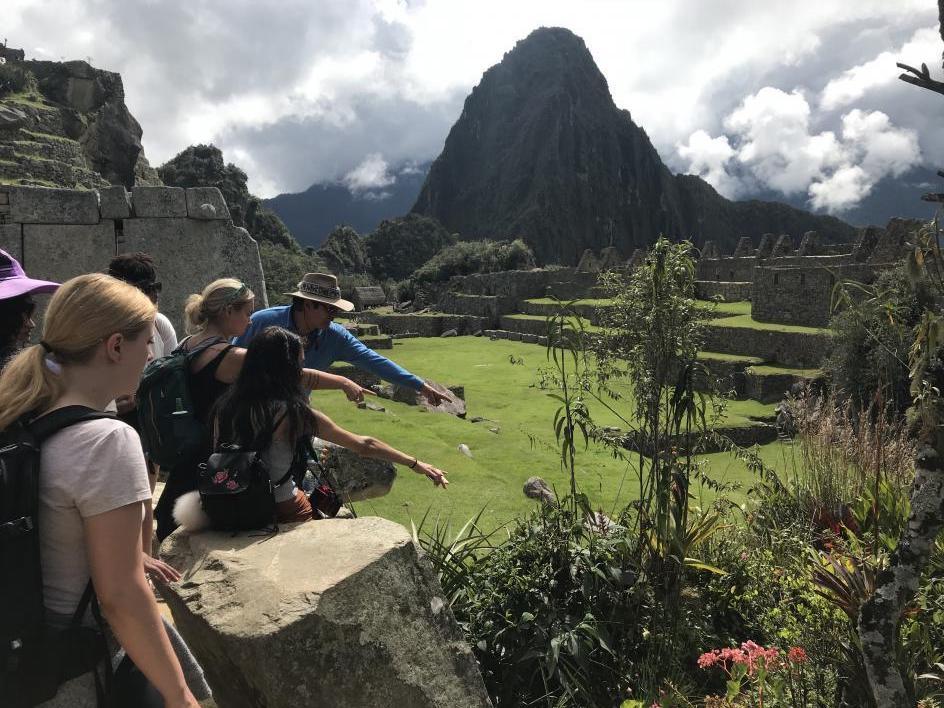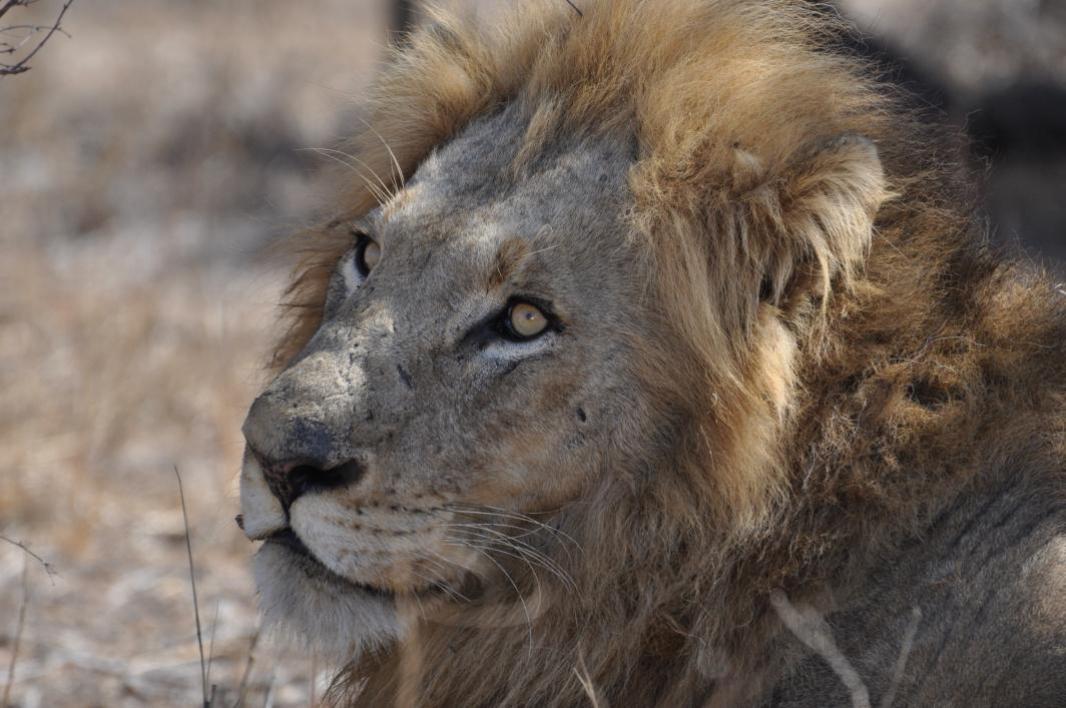Putting the world in world-class education
This summer, ASU students will snack, snorkel, survey and safari around the globe to gain a broader view of the human story

For those who study humanity, it’s tough to get the big picture if they limit themselves to the culture, history and environment of just one place. That’s why the School of Human Evolution and Social Change at Arizona State University is taking students to four continents and two island nations this summer, where they will learn firsthand about topics like traditional health care practice, the latest in sustainable tourism, global haute cuisine, modern wildlife management and the dawn of humanity.
Checking off bucket lists in Australia
The school’s Australia program is perfect for students craving adventure, says Assistant Professor Katie Hinde, the trip’s faculty leader.
“It includes some incredible adventure activities — kayaking, hiking, snorkeling and canoeing — but no experience is necessary. Many students learn these skills on the program,” she said.
Snorkeling at the Great Barrier Reef checks off a lot of students’ bucket lists, but this summer, Hinde is most excited for the sunset camel ride at the country’s most famous rock formation, Uluru.
During the trip’s four weeks, students will live by the “One Health” concept that human, animal and ecosystem health are all interconnected and explore those connections through hands-on experiences across the country.
“The trip was an amazing experience. It was eye-opening, fun and educational all at the same time,” said undergraduate student Danielle Velasco Padilla, who went to Australia with the school in 2018. “You didn’t feel like you were learning, but when you talked to your classmates the next day, you would be surprised with all the information you retained.”
Listening to tales of the dead in England
The England program suits students from any discipline, as the undergrads from dozens of different majors who have attended in the past can attest. It touches on history, health, forensics and urban life, so there’s something of interest for everyone.
When asked what makes the program stand out, Professor Alexandra Brewis Slade, who will help Professor Kelly Knudson lead this summer’s trip, said, “The learning here is through experiencing, talking with a range of local experts and exploring firsthand so many corners of an amazing city. By the end of the program, many students feel like London is a second home.”
That may be because program participants get privileged looks into many of the city’s otherwise-hidden places, like behind-the-scenes at the famed British Museum or inside the oldest hospital in Europe.
“I was so close with all these remains from ancient Egypt, like a mummified crocodile — really cool stuff. And I was inches away from it, no barriers, no glass,” said undergraduate student Kaeli Stenroos of her British Museum experience last summer.
A key focus of the trip is learning how scientists study human history, including major historical events like the Black Plague, through skeletal remains — a discipline known as bioarchaeology. Students also take walking tours of London with city guide Angie, who has been a group favorite for over a decade.
Sampling the flavors of France
Those who are curious about the relationship between food and identity, culture and health are ideal for the school’s program in France. There, students have the opportunity to explore topics such as the importance of food in French culture, how food has changed with processes like industrialization and immigration, and how people make decisions about what to eat.
“I am really excited to try out my skills in the chocolate workshop,” said lecturer Rhian Stotts, who leads this program. “I also think that chocolate, as well as coffee, another topic we will explore, provides such an interesting way to look at our globalized food system overall.”
As the home of the people who pioneered the concept of cuisine, France is also the perfect place to learn how food has forged relationships and created identities throughout history.
Stotts advises students who join the program to “come with an open mind and be willing to actively engage in new experiences. You might not like stinky cheese, but there is a reason we ask you to try it — to think about the role that cheese plays in French culture and how aspects of food, such as smell, can both attract and repel.”
Exploring the people and nature of New Zealand
New Zealand provides a plethora of learning opportunities, said Research Professor David Feary, a native of the country and leader of this program. It has a socialized health care system, hosts a multicultural society (including the indigenous Maori people) and — as a smaller island nation — takes pains to incorporate sustainability into many aspects of life.
The trip also includes tours to “Lord of the Rings” sites (because New Zealand) and breathtaking encounters with nature.
“This year we’re going river rafting down through this forested area where it’s all about protection of native forests and the environment. Water is a big theme throughout the trip, so I’m looking forward to that,” Feary said.
Students will also get the chance to collect data from interviews with locals for an ongoing climate survey, as well as learn about Maori culture and approaches to health.
“This trip affirmed the things that I’ve been studying as an anthropologist. You learn a lot of theoretical frameworks for taking your mind out of your subjective biases, but actually being in another culture, seeing the different types of diversity, it was a different experience than I had ever had before,” said undergraduate Azzam Almouai, who joined last year’s excursion.
Feary suggests that students pack light, as they often have to carry their luggage while traveling from Northland all the way down to Queenstown, hopping coaches and ferrying between islands.
Eating while learning in Peru
For foodies who’d rather go south of the border than across the ocean, the Peru program uses food as a lens to understand humans and their relationships to each other and to the environment, while also exploring how those relationships shape our identities, daily practices and health.
“Because our focus is on food, there’s a lesson and discussion to be had around every single meal and snack. And what’s more fun than eating while you learn?” said lecturer Sara Marsteller, who leads the trip. “Students will learn not only about Peruvian cuisine and culture, but about themselves as well.”
A major highlight of the trip is visiting the Misminay rural community outside of Cusco. Residents welcome students into their homes and give them hands-on lessons in their techniques for plowing the land and spinning and dying wool.
“Plus, the view of the Andes Mountains from their hillside is even more breathtaking than Machu Picchu in my opinion!” adds Marsteller. (Although, since the trip also includes a visit to that famous Incan site, students can decide that for themselves.)
Encountering wildlife and human history in South Africa
“Anyone who is interested in the exploration of both nature and other cultures would have a great time on the South Africa trip,” said President’s Professor Kaye Reed, the program’s lead.
There, students will learn about everything from animal identification and Khoisan culture to the apartheid system and hominin fossil discoveries.
“My absolute favorite place to take students is Kruger National Park, where we will be identifying mammals of all kinds and working on the Hominins and Habitats Project from a safari vehicle,” Reed said.
The trip also includes an outing at the seaside West Coast National Park, where students hike, kayak and learn about the local wildlife. However, Reed warns, they shouldn’t expect warm temperatures to match the setting.
“July is winter in the Southern Hemisphere — don’t bring light clothing because you are going to Africa. Coats are a necessity in some places,” she said. “But be ready for adventure.”
These are just a few of the many experiences offered through the ASU Study Abroad Office, which has 250-plus programs in more than 65 different countries.
Top photo: Students show their Sun Devil pride on a beach in Australia. Photo courtesy of Katie Hinde
More Health and medicine
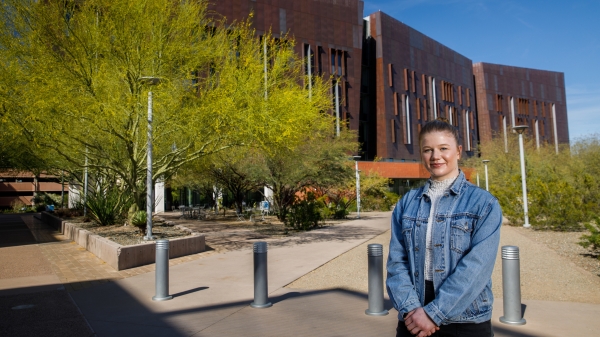
First exchange student for Biodesign Institute Europe bridges labs 5,000 miles apart
This spring semester, Grace Colley traveled to Arizona State University and became the first student to participate in the Biodesign Institute Europe student exchange program. In doing so, she helped…
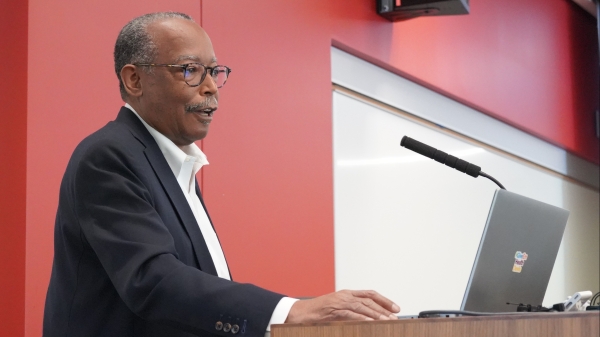
College of Health Solutions hosts visit from leading expert in genomic research
Some fortunate Arizona State University faculty, staff and students were able to gain valuable insights and perspective during a visit by one of the country’s leading figures in health and scientific…
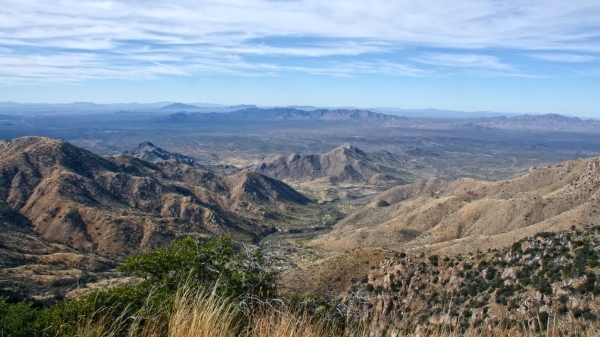
Indigenous ASU research team recommends assistance for tribal members still reeling from COVID-19’s effects
When Matt Ignacio’s tribe, the Tohono O’odham Nation, donated $1 million to Arizona State University to support COVID-19 research, he applied for some of the money to understand and report any…
